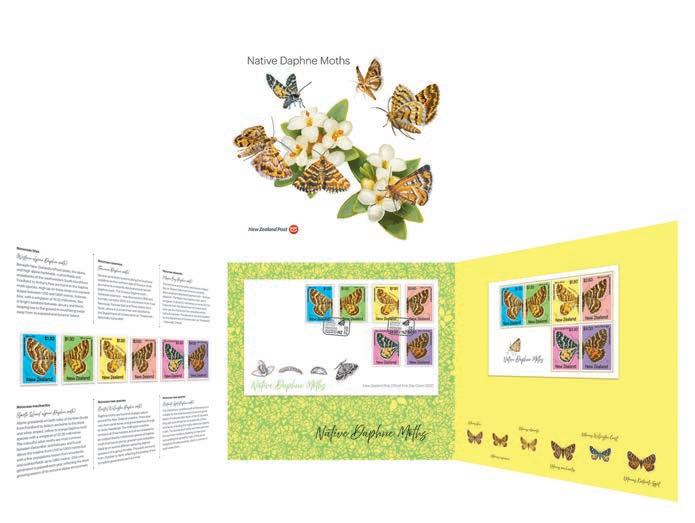
2 minute read
Diurnal delights
There are an estimated 2,000 insect species categorised as moths or butterflies in New Zealand. Of these species, over 90 per cent are unique to our country, including the 35 daphne moths in the genus Notoreas.
Butterflies and moths both belong to a group of insects called Lepidoptera. Many people will be familiar with their lifecycles - adults lay their eggs on plants or other surfaces, larvae hatch from the eggs, and the larvae grow and metamorphose from pupae into adults. Most adults live no longer than a week, and spend those days focused on reproduction. During this time they play a role in their surrounding ecosystem, transferring pollen from plant to plant as they feed on nectar. New Zealand’s moths and butterflies are found in all habitats across the country, increasing in prevalence in the southern regions, where their preferred open habitats are more plentiful. A common moth myth is that they are solely nocturnal - there are many exceptions, including New Zealand’s daphne moths. These colourful, day-flying species have wingspans 18 to 26 millimetres, characterised by their constantly vibrating, neatly patterned wings when they are active on sunny days. They are often seen sunbathing on bare surfaces, feeding on nectar and carefully laying their eggs on the right plant during periods of bright sunshine. Of the 35 daphne moth species, 20 have been formally described and named, including three new species described in recent years. An active research programme is classifying the other possible new species, and it is inevitable that further species will be discovered given New Zealand’s, particularly the South Island’s, wealth of potential habitat – from its long and varied coastline to the multitude of alpine areas with different geological histories. Daphne moths are excellent botanists. Their caterpillars feed on the foliage of just one family of plant, which includes the two New Zealand genera of daphne – Pimelea and Kelleria – while the adults take nectar from the sweet-smelling flowers of their hostplants. Together with their daphne hostplants, they are often numerous in naturally open habitats, from the coastline – sand dunes, gravel beaches and rocky headlands – to inland short-tussock grasslands and a range of open habitats above the treeline, such as alpine grassland, herbfields, cushionfields and snowbanks. With a few species found as high as 2,000 metres above sea level, daphne moths really do define New Zealand’s dynamic topography, coastline and geological features, and epitomise our picturesque and varied landscapes. Nine of the daphne moths are threatened with extinction and are listed as such by the Department of Conservation. Several of the daphne moth species threatened with extinction are the subject of Department of Conservation programmes and active management.
Native Daphne Moths stamps and collectables were issued on 5 February 2020. Stamps, miniature sheets and presentation packs are available for order now.











